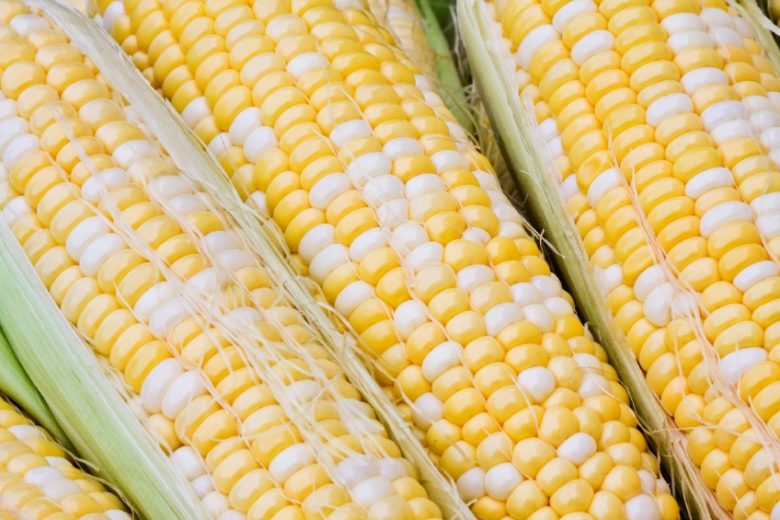
Genetically engineered (GE) and genetically modified (GM) foods contain an ingredient whose DNA has been altered via recombinant DNA technology. The World Health Organization asserts that there’s no likely health risk associated with consuming genetically engineered foods, and for every ethical argument against the genetic engineering of foods, it seems there is one for GE foods. But whether or not they find the idea of genetically engineered foods distasteful, most consumers are unaware that 60 to 70 percent of the processed foods we eat already contain at least one genetically engineered ingredient—especially those containing soybeans, corn or canola oil. And according to current nutrition labeling laws, shoppers will never know which food’s genes have been diced and spliced.
Current Labeling Regulations
“Because the Food and Drug Administration doesn’t require labels on genetically modified foods or foods with genetically engineered ingredients, those people who are concerned can’t rely on most food labels to give them the facts,” says Elisa Zied, MS, RD, president of Zied Health Communications, LLC, in New York City.
There are a few exceptions. The FDA does requires labeling if the engineered food differs substantially from the original food in terms of its composition or nutrition content, if it contains dangerous levels of toxic compounds or if a new allergen has been introduced:
- If a bioengineered food is significantly different from its traditional counterpart such that the common or usual name no longer adequately describes the new food, the name must be changed to describe the difference.
- If an issue exists for the food or a constituent of the food regarding how the food is used or consequences of its use, a statement must be made on the label to describe the issue.
- If a bioengineered food has a significantly different nutritional property, its label must reflect the difference.
- If a new food includes an allergen that consumers would not expect to be present based on the name of the food, the presence of that allergen must be disclosed on the label.
Nonetheless, for some people, a lack of clear GE/GM identification on food products makes it difficult for shoppers to make informed decisions. In response to “Monsanto Develops Sweet Corn for Consumers” in the Fall 2011 issue of ADA Times, Joan A. Marn, MS, RD, LD/N, clinical instructor in the department of dietetics and nutrition at Florida International University writes: “You report that ‘Modified for resistance to Monsanto's Roundup herbicide and certain insects, the new corn will not be labeled with Monsanto's name or be labeled as a genetically modified food.’ What an outrage! We don't even know what GM foods are doing in our bodies, and to have Monsanto hide their name and not label it GM is beyond unacceptable; it is deceptive.”
Marn is not alone in this sentiment. When asked if they are in favor of mandatory labeling of GE foods, many consumers generally say yes. However, responses to more specific questions about food biotechnology compared to other food safety issues show a different attitude. In a 2008 International Food Information Council survey, 79 percent of people ranked contamination and food safety as their biggest concerns, while only 1 percent chose biotechnology as their leading food confidence issue.
The Expense of Labeling
“In the same way there is a difference in price between organic and non-organic foods, mandatory labeling of genetically engineered foods would carry a price differentiation,” says Terry Etherton, PhD, department head and professor of animal nutrition at Penn State University. Just as there is a cost of ensuring that foods are grown or raised organically, there would also be an additional cost for ensuring that a food did not contain GMO ingredients, which the producer would have to pass onto the consumer. Because products have to be controlled to be either organic or non-GMO before they can be labeled, the costs are linked.
And American consumers may not be willing to pay up. A 2001 Bruskin Research National Opinion Poll conducted on behalf of the Center for Science in the Public Interest found that 44 percent of respondents would be unwilling to pay more money for the labeling of foods containing genetically engineered ingredients. And in a 2002 Journal of Agrobiotechnology Management & Economics study, researchers polled both Norwegians and Americans about their concerns regarding GE foods: 36 percent of Norwegians stated that price would impact their decision whether or not to buy genetically engineered foods compared to 67 percent of Americans.
An economic burden associated with mandatory labeling could change the variety of foods available on supermarket shelves, according to Etherton. Rather than passing on the costs to consumers through increased pricing, some manufacturers may opt not to produce foods that contain GE ingredients at all, shrinking our choices at the grocery store.
On the other hand, the price pendulum could swing in the other direction, says Beth Stark, RD, LDN, healthy living coordinator for Pennsylvania-based Weis Supermarkets. “While consumers are becoming more savvy about genetically engineered foods, there’s still a huge amount of public uncertainty about their safety,” says Stark.
Options for Consumers
“If you’re looking to avoid or minimize these ingredients because of health or other concerns, look for products that contain labeling certifying that they’re not genetically engineered,” says Zied.
The Non-GMO Project, a Bellingham, Wash.-based organization, provides third-party verification for manufacturers who voluntarily label products as free of genetically engineered ingredients. To earn the “Non-GMO Project Verified” seal, foods must be in compliance with the European Union requirements.
A second option is to buy food that is certified organic. According to USDA regulations,foods and ingredients labeled organic cannot be produced using biotechnology.
Still, cautions Zied, birds, pollens, and other environmental forces and factors could potentially cross-seed crops. “These seals cannot guarantee that organic products or those with the Non-GMO Project Verified seal are 100-percent GE free,” says Zied, “but they may provide an added layer of assurance.”
